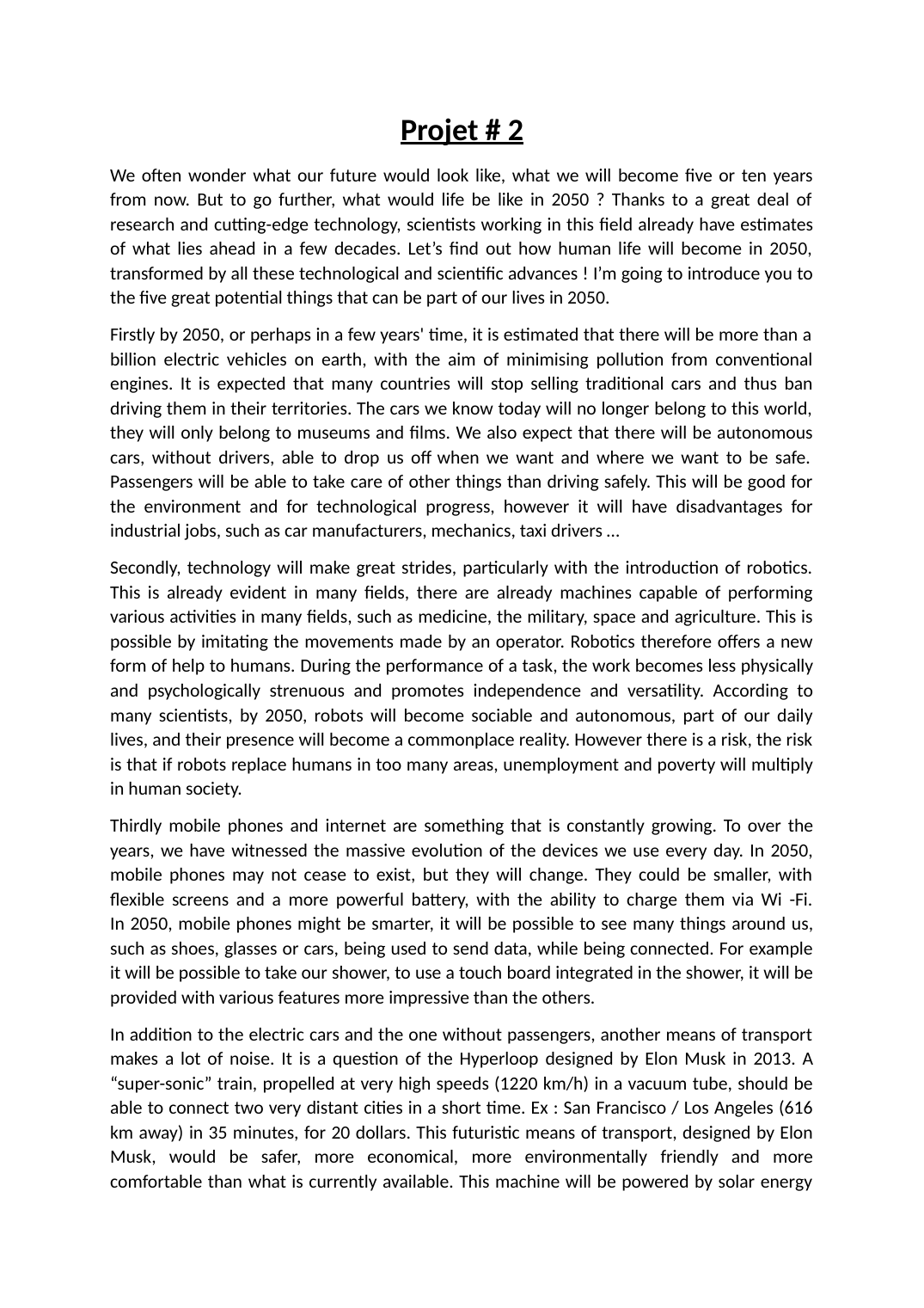Anglais: to go further, what would life be like in 2050 ?
Publié le 09/10/2021
Extrait du document
«
Projet # 2
We often wonder what our future would look like, what we will become five or ten years
from now.
But to go further, what would life be like in 2050 ? Thanks to a great deal of
research and cutting-edge technology, scientists working in this field already have estimates
of what lies ahead in a few decades.
Let’s find out how human life will become in 2050,
transformed by all these technological and scientific advances ! I’m going to introduce you to
the five great potential things that can be part of our lives in 2050.
Firstly by 2050, or perhaps in a few years' time, it is estimated that there will be more than a
billion electric vehicles on earth, with the aim of minimising pollution from conventional
engines.
It is expected that many countries will stop selling traditional cars and thus ban
driving them in their territories.
The cars we know today will no longer belong to this world,
they will only belong to museums and films.
We also expect that there will be autonomous
cars, without drivers, able to drop us off when we want and where we want to be safe.
Passengers will be able to take care of other things than driving safely.
This will be good for
the environment and for technological progress, however it will have disadvantages for
industrial jobs, such as car manufacturers, mechanics, taxi drivers …
Secondly, technology will make great strides, particularly with the introduction of robotics.
This is already evident in many fields, there are already machines capable of performing
various activities in many fields, such as medicine, the military, space and agriculture.
This is
possible by imitating the movements made by an operator.
Robotics therefore offers a new
form of help to humans.
During the performance of a task, the work becomes less physically
and psychologically strenuous and promotes independence and versatility.
According to
many scientists, by 2050, robots will become sociable and autonomous, part of our daily
lives, and their presence will become a commonplace reality.
However there is a risk, the risk
is that if robots replace humans in too many areas, unemployment and poverty will multiply
in human society.
Thirdly mobile phones and internet are something that is constantly growing.
To over the
years, we have witnessed the massive evolution of the devices we use every day.
In 2050,
mobile phones may not cease to exist, but they will change.
They could be smaller, with
flexible screens and a more powerful battery, with the ability to charge them via Wi -Fi.
In 2050, mobile phones might be smarter, it will be possible to see many things around us,
such as shoes, glasses or cars, being used to send data, while being connected.
For example
it will be possible to take our shower, to use a touch board integrated in the shower, it will be
provided with various features more impressive than the others.
In addition to the electric cars and the one without passengers, another means of transport
makes a lot of noise.
It is a question of the Hyperloop designed by Elon Musk in 2013.
A
“super-sonic” train, propelled at very high speeds (1220 km/h) in a vacuum tube, should be
able to connect two very distant cities in a short time.
Ex : San Francisco / Los Angeles (616
km away) in 35 minutes, for 20 dollars.
This futuristic means of transport, designed by Elon
Musk, would be safer, more economical, more environmentally friendly and more
comfortable than what is currently available.
This machine will be powered by solar energy.
»
↓↓↓ APERÇU DU DOCUMENT ↓↓↓
Liens utiles
- what cause would you be ready to fight for
- oral dossier llce anglais
- exposé sur les violences animalières (ANGLAIS)
- SPE anglais monde contemporain quelle est la situation des amérindiens aujourd’hui?
- SUJET SES : En quoi la pratique de l'anglais favorise l'entrée dans le marché du travail ?

































